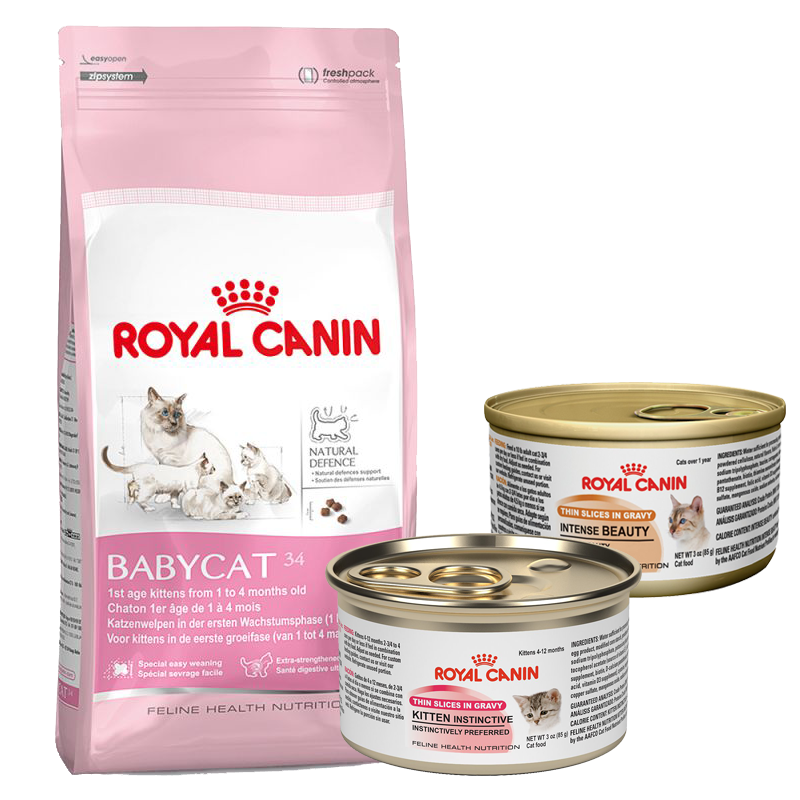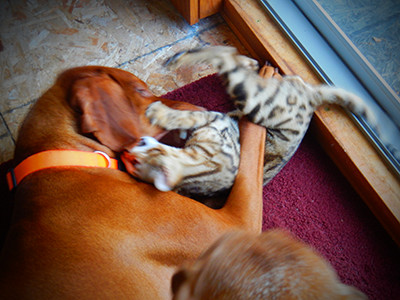Frequently Asked Questions
1.) What is a Bengal?
A) A bengal comes from the breeding of an Asian leopard cats and a domestic cat. For more info on this subject please see our "About Bengals" page.
2.)What is the temperament of a bengal? Is it wild?
A.)Bengals are pretty much like your average house cat. They also have distinct personalities according to the individual just like other domestics. Generally they are friendly and outgoing. Most are very good climbers and jumpers because the Asian leopard cat catches and eats birds. It is not uncommon for bengals to like water and this is because Asian leopard cat catches and eats fish. Bengals tend to be very intelligent and are easy to leash train. Generally they do not make good lap cats as they remain active throughout their lives.They are very playful. Of course there are exceptions to this and not all bengals act the same or like the same things.
3.) Bengal Rosette Patterns Single-Spotting
Is used to define a pattern that has no second color to the spot (there is only the background color of the cat and the one spot color).
Cluster Rosettes
Is used to define a pattern with small spots forming clusters around the second “inner” color that is different from the background.
Paw-Print Rosettes
Is used when the rosette is open on one side and there are spots edging the second color creating a pattern that looks like paw prints walking across the background.
Embryonic Rosettes
Is when the spot shows subtle signs of a second color on the edges. (note; this pattern is also displaying the arrowhead pattern as an embryonic rosette)
Doughnut Rosettes
Is used to define a rosette that is completely or almost completely outlined with a darker color and the center is a distinctly different color to that of the background.
Arrowhead Rosettes
Is used when you see a spot or rosette in triangular shapes with the “tip of the arrow” pointing toward the back of the body. (note; this pattern can also be solid in the single spotted group.)
4.) What do bengals eat? Can they eat regular cat food? A) Bengals can eat dry food, however, I personally like to feed my bengals closer to what they would consume in the wild. Bengals can easily digest raw meat, because cats were designed to (we never see cats building fires and cooking meat in the wild). They tend to eat less because they can digest the food better and they receive the nutrients they need easier. Fat cats lose weight and skinny cats gain weight on this diet. It also eliminates any stomach and bowel All of my kittens are fed a combination of dry and canned food. My preference include Royal Canin (Intense Beauty & Kitten Instincitive varieties) & Blue Wilderness foods. Nutrients can be found in a variety of sources, but the right ingredients help deliver optimal nutrition for optimal health.
Vitamin A:
Vitamin D:
Vitamins E C:
Omega 3 6:
Calcium:
Phosphorus:
Sodium:
Energy Supplying Nutrients - Proteins:
Energy Supplying Nutrients - Carbohydrates:
Energy Supplying Nutrients - Fats:
|
A) Just like any other cat there may be a period of adjustment for your new bengal. Most bengals will eventually get along with your cat/dog once they become familiar with them and know that they are safe to be around. Bengals tend to like children because they are playful and children like to play with them. As with any cat though you have to be careful about letting very small children play with your bengal unsupervised. Any cat can inflict harm on a small child when frightened or hurt. |





















 problems. Cats with a history of loose stools and vomiting soon get better on a raw meat diet. Another good thing about feeding raw is it costs less and there are no stinky stools. That's right, no smell whatsoever!!! Best of all it is healthy.
problems. Cats with a history of loose stools and vomiting soon get better on a raw meat diet. Another good thing about feeding raw is it costs less and there are no stinky stools. That's right, no smell whatsoever!!! Best of all it is healthy.  5.)Do bengals get along with other cats/dog/children?
5.)Do bengals get along with other cats/dog/children?